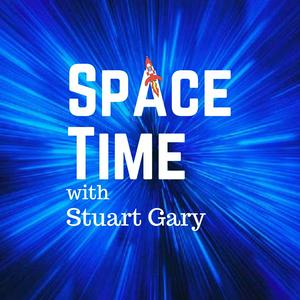Exoplanets Galore: Celebrating 6,000 Discoveries and Exploring Venus
In this episode of SpaceTime, we celebrate a major milestone in exoplanet discoveries, unravel the enigmatic surface of Venus, and delve into the intriguing tale of interstellar comet 3I ATLAS.Exoplanet Count Surpasses 6,000Astronomers have reached an impressive milestone, confirming their 6,000th exoplanet, a testament to the rapid pace of discoveries since the first detection of an exoplanet in 1995. This milestone not only highlights the evolving understanding of our galaxy but also raises questions about the myriad of planetary types discovered, from rocky planets to gas giants. While the hunt for Earth-like planets continues, the methods employed to discover these distant worlds remain a challenge, with fewer than 100 exoplanets directly imaged to date. The future holds promise with upcoming missions, including NASA's Nancy Chris Roman Space Telescope, which aims to further uncover the secrets of our cosmic neighbourhood.Decoding Venus's Mysterious SurfaceScientists are making strides in understanding the peculiar features of Venus, particularly the crown-like structures known as coronae. A new study suggests these features may be the result of magma plumes attempting to break through the planet's crust. By mapping the paths of these magmatic bursts, researchers are shedding light on Venus's geological history and its stark contrast to Earth, despite their similarities in size and formation. The findings could help explain why Venus has become a hellish environment, devoid of life, while Earth thrives.Interstellar Comet 3I ATLASAstronomers have captured stunning new images of interstellar comet 3I ATLAS, revealing a prominent tail and glowing coma as it journeys through the inner solar system. These observations provide valuable insights into the comet's composition and behaviour, suggesting that it shares similarities with comets originating from our own solar system. As 3I ATLAS approaches the Sun, its increasing activity offers a unique opportunity for scientists to study material that formed around distant stars. The comet is expected to re-emerge in November, promising further observations and discoveries.www.spacetimewithstuartgary.com✍️ Episode ReferencesNASA Exoplanet Science Institutehttps://exoplanets.nasa.gov/Proceedings of the National Academy of Scienceshttps://www.pnas.org/Gemini Observatoryhttps://www.gemini.edu/Become a supporter of this podcast: https://www.spreaker.com/podcast/spacetime-space-astronomy--2458531/support.Exoplanet Count Surpasses 6,000Decoding Venus's Mysterious SurfaceInterstellar Comet 3I ATLAS


